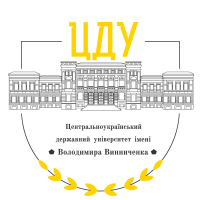USE OF SMART TECHNOLOGIES IN TEACHING FOREIGN LANGUAGES TO STUDENTS OF NON-LINGUAL SPECIALIZATIONS
DOI:
https://doi.org/10.32782/2522-4077-2024-208-19Keywords:
SMART technologies, webinar, social networks, blogs, e-learning systems of foreign language teaching, SMART tutorialAbstract
The article describes modern problems of teaching a foreign language to students of non-linguistic specializations in institutions of higher education with the aim of developing and improving their professional competence using the Internet and SMART technologies. It is noted that teaching a foreign language in accordance with the professional direction should be carried out with the help of modern Internet technologies that increase the motivation and cognitive activity of students of higher education, eliminate the psychological barrier in the process of using a foreign language as a means of communication in a higher education institution and in the future professional activity. It is emphasized that in modern educational conditions, the cognitive-communicative approach to learning foreign languages of a professional direction involves the integration of interactive technologies, including multimedia, into the process of professional training of students of higher education, which allows more complete use of visual and visual-auditory analyzers, thus increasing the quality of educational and methodological support of the educational process and the effectiveness of assimilation of educational material. The views of scientists on the use of SMART technologies in the process of teaching a foreign language to students of higher non-linguistic education are highlighted. The article substantiates the necessity of using SMART-technologies in teaching a foreign language to students of non-linguistic specializations, formulates the main principles of their operation and main characteristics. Using the example of SMART technology tools (webinars, social networks, blogs, electronic foreign language teaching systems, SMART training programs), the relevance and justification of their use from a didactic point of view was analyzed, and the need for constant improvement of the process of teaching foreign languages with their help was emphasized. It is noted that the regulated system of SMART technologies helps to master a foreign language in accordance with the professional direction in the conditions of a modern institution of higher education.
References
Blood R. The Weblog Handbook: Practical Advice on Creating and Maintaining Your Blog. Cambridge, Mass, 2002. 144 p.
Cogill J. What are the effects on teaching with an Õnteractive whiteboard in a primary school? London, 2001. 48 p.
Dill M. A Tool to improve student achievement in math: An interactive whiteboard. Ashland University, 2008. 77 p.
Lewin C., Somekh B., Steadman S. Embedding interactive whiteboards in teaching and learning: The process of change in pedagogic practice. Education and Information Technologies, 2012. Vol. 13. P. 291-303.
Min K., Siegel C. Integration of smart board technology and effective teaching. I-Manager’s Journal on School Educational Technology, 2011. 7(1). P. 38-47.
SMART Technologies, Inc. (2006). Interactive whiteboards and learning. [Електронний ресурс]. – Режим доступу: http://downloads01.smarttech.com/media/research/
Sünkür M., Şanlı Ö., Arabacı İ. Elementary school students’ views toward SB practices. 5th International Computer & Instructional Technologies Symposium, 22-24 September, 2011. Fırat Univesity, Elazığ, Turkey. P. 23-29.








